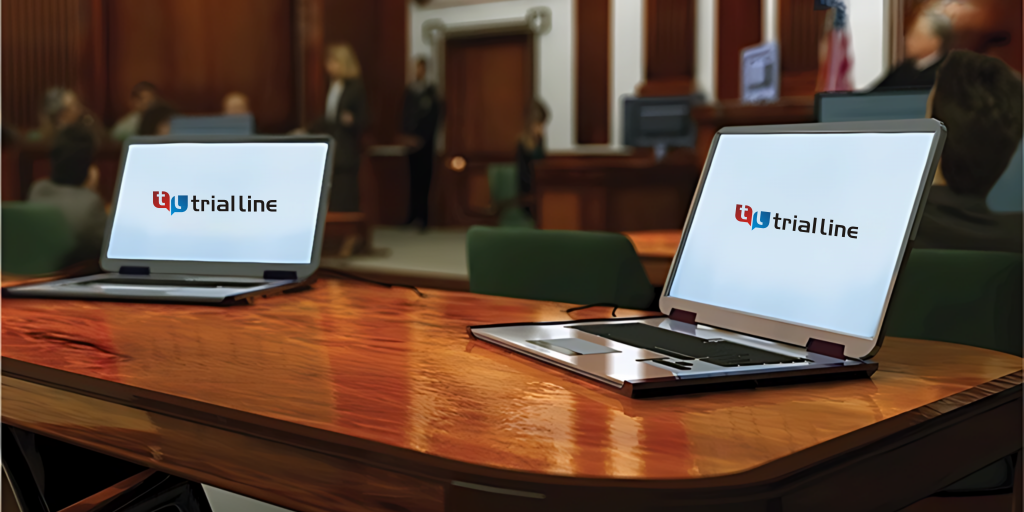Exactly How Test Presentations Enhance Your Argument and Encourage Jurors
Test discussions serve as a pivotal device for improving legal disagreements and convincing jurors. The tactical use of visuals not just makes clear complicated info however likewise captures jurors' interest much more properly than words alone.

Relevance of Aesthetic Help
Visual aids play a vital duty in boosting the performance of trial discussions, as they can considerably boost audience involvement and retention of information. In the context of a trial, where jurors are charged with handling facility information, visual help offer to streamline and clarify bottom lines. Graphes, graphs, and photos can communicate information and ideas that may otherwise overwhelm or perplex jurors, allowing for a more straightforward understanding of the proof offered.
Furthermore, aesthetic aids aid in keeping juror interest throughout the proceedings. By damaging the monotony of verbal testimony, these devices can stress vital arguments, making them a lot more memorable. Reliable visual help can likewise stimulate emotional feedbacks, which can be critical in encouraging jurors to line up with the speaker's narrative.

Crafting Compelling Stories
A compelling story is important in trial discussions, as it works as the backbone of reliable persuasion. It allows attorneys to weave together realities, evidence, and emotional components right into a meaningful tale that reverberates with jurors. This narrative framework enables jurors to understand the complexities of the instance while assisting them via the attorney's disagreement.
To craft an engaging narrative, attorneys must focus on clarity and comprehensibility. In addition, the usage of dazzling summaries can develop psychological pictures that help jurors envision the occasions, making the story a lot more remarkable.
Moreover, incorporating crucial styles throughout the presentation enhances the core message and aids in retention - trial presentations. The story must not only share information however likewise evoke a feeling of justice, highlighting the stakes involved. Eventually, a well-constructed story promotes a link between the jurors and the instance, positioning the lawyer's disagreement as both legitimate and compelling, consequently increasing the chance of a positive judgment

Involving the Jury Mentally
Reliable court involvement pivots on the lawyer's ability to link with jurors on a psychological degree. This link can dramatically impact jurors' assumptions and their best decision-making.
Visual help, such as photos or videos, can better improve emotional engagement, offering jurors with vivid representations of the situation's human aspects. Crafting a narrative that highlights the battles and accomplishments of the individuals included makes sure that jurors see past the legal arguments and identify the human consequences of their decisions.
Moreover, tone and body movement play an important duty in conveying feeling. An attorney's enthusiastic distribution can resonate with jurors, strengthening their psychological investment my explanation in the instance. It's important to stabilize psychological appeals with factual evidence, making certain that jurors feel compelled to act while remaining grounded in the reality. Eventually, an emotionally involved court is much more likely to be convinced, making psychological link an essential element of reliable test presentations.
Structuring Your Discussion

The body of the discussion should be realistically fractional into bottom lines, each supported by engaging evidence. It is valuable to use narration techniques to weave truths into a story that jurors can quickly adhere to. Visual help, such as graphes and videos, can improve understanding and engagement, assisting to highlight critical pieces of evidence.
Real-World Study
Checking out real-world case studies gives indispensable understandings right into the art of test presentations and persuasion. The defense team successfully used a strategy that combined prominent professional statements with multimedia presentations, which captivated jurors and ultimately affected their choice.
An additional noteworthy example is the "McDonald's Coffee Instance," where the complainant's attorneys made use of visuals images of the injuries sustained by Stella Liebeck. trial presentations. This stark visual proof played a vital duty in conveying the intensity of Look At This her burns, leading to a considerable jury honor. Such situations demonstrate that impactful test discussions often rest on the effective combination of visuals and narration to evoke emotional reactions from jurors
In addition, the "Casey Anthony Test" highlighted the relevance of narrative comprehensibility and reputation. The prosecution's failing to establish an engaging timeline diminished their persuasive power, highlighting the requirement of a well-structured discussion. Examining these situations reveals that successful test discussions require strategic planning, psychological interaction, and the ability to reverberate with jurors' values and beliefs.
Final Thought
Trial presentations significantly boost debates and encourage jurors with the calculated use of aesthetic help, engaging narratives, and emotional engagement. By simplifying intricate details and cultivating links with the target market, these components produce a memorable and impactful experience. A well-structured discussion equilibriums sob stories with accurate evidence, eventually reverberating with jurors' values. The integration of these methods not only influences decision-making but also underscores the relevance of efficient communication in the court.